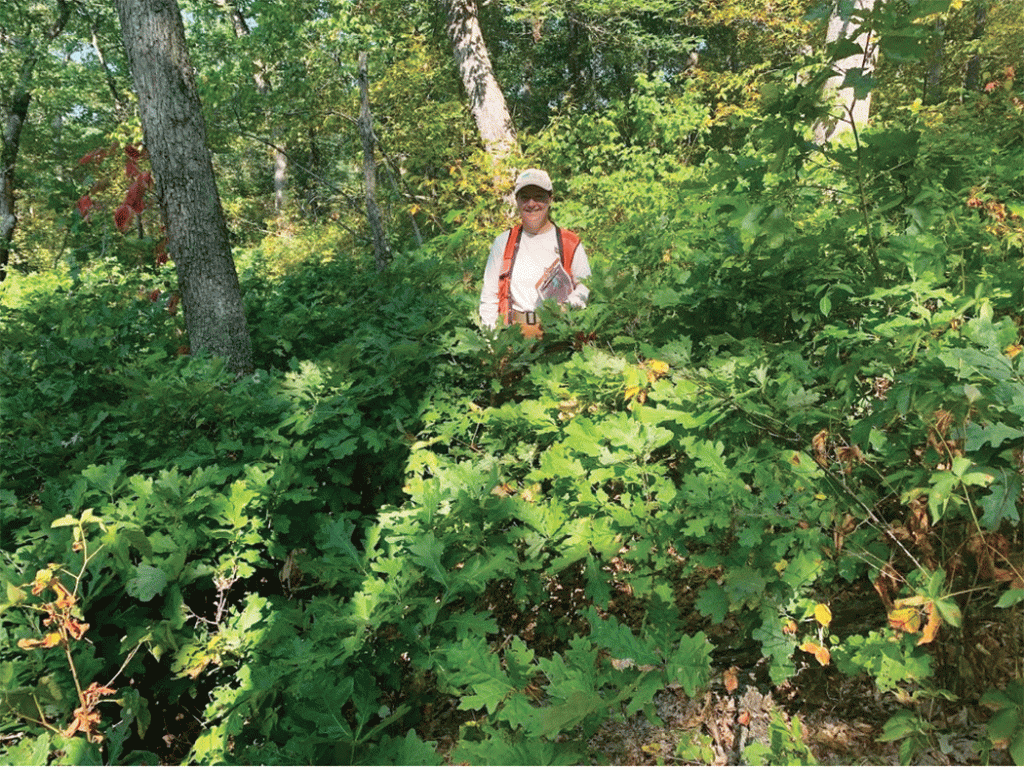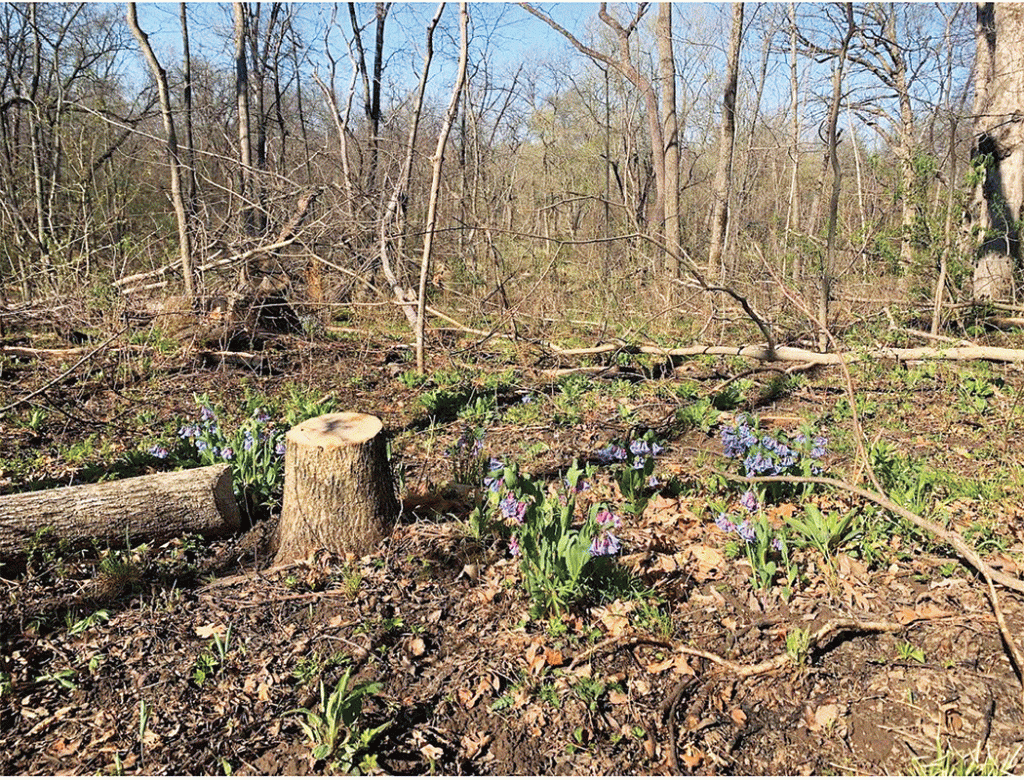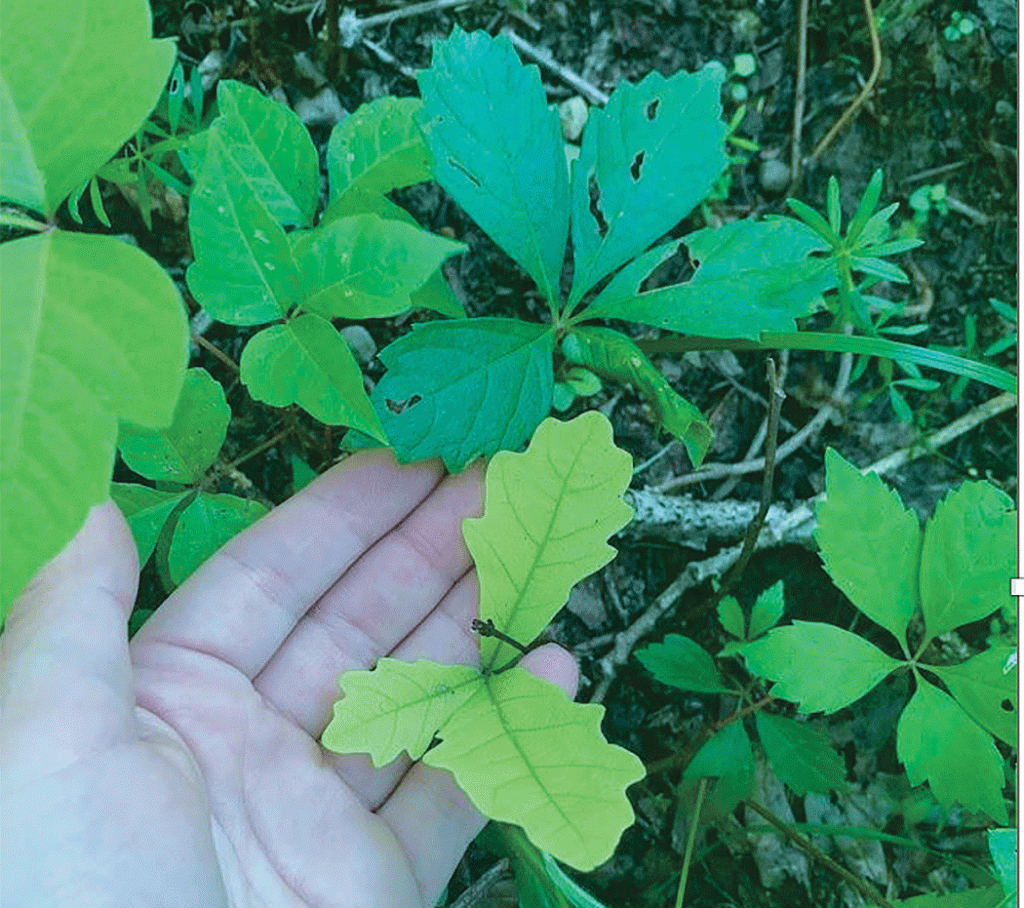
The general consensus on trees is that they inspire great fondness, respect, and gratitude. I share those sentiments so much that I decided to pursue forestry as my career path, aspiring to conserve and protect the forests that I love. To my surprise, I quickly learned that being a forester often means wielding a chainsaw in order to practice sound, scientific silviculture—the art and science of growing and cultivating trees. Forests are essential to the environment, providing habitat for wildlife, beauty to our landscapes, and sustenance for life in general. A casual observer might be upset at the sound of a chainsaw in the forest or the sight of its destruction, but there are many conservation-related circumstances that make the strategic removal of trees beneficial.
Supporting Natural Oak Regeneration
Historically, fires started by Native Americans or lightning strikes would roll through Iowa’s once-abundant prairies into the woodlands and forests, eliminating more shade-tolerant tree species and allowing the fire-adapted oaks to dominate. That’s no longer the case. Because of habitat fragmentation and fire suppression, our oak and hickory forests are changing to mixed hardwood forests at an unnatural and alarming rate.
Losing our oak forests would be disastrous to countless wildlife and plant species. The Iowa Department of Natural Resources (DNR) says that “oaks alone support at least 534 species of butterflies and moths with habitat needed for reproduction.” To mimic the disturbances that have been lost, conservation work is focused on culling the shade-tolerant forest understory through felling and girdling. The felled and girdled trees provide habitat for many species and also return nutrients to the soil as they decompose.
Sustainable Timber Production
The above practice is often complementary to a selective or shelterwood-style timber harvest, in which mature trees are left standing to provide shelter for saplings, and unhealthy or less desirable trees are sold for harvest. The residual trees provide the seed source for the next generation, and the sunlight created from the harvest and the culling of the understory allow new seedlings to become established. According to the Iowa DNR, the state grows 2.5 times more wood than is currently harvested annually, and the state sawmill industry provides around 600 jobs for Iowans, while adding around $180 million to the economy each year.

Overstocked Forests
An important yet oftentimes unknown stewardship practice is thinning a forest before a commercial harvest. Forest stand improvement (FSI) is done by selectively culling trees that are competing with the most valuable timber and wildlife trees. This thinning reduces undesirable trees, increases the production of acorns and other nuts, aids the survival of native woodland plants, and enhances forest health.
Removing Invasive Trees
Some invasive tree species have become a threat to Iowa and other parts of the country. Examples include tree of heaven (ailanthus), black locust, Siberian elm, white mulberry, and Bradford or Callery pear. These invasive species often outcompete our natives due to their longer growing seasons, lack of competition, and lack of pests or diseases. They also do not support even a fraction of the wildlife and pollinator species that our native trees do.
Low Diversity
In some cases, trees may be culled to promote diversity. Examples relevant to this part of Iowa include mature pine plantations and stands of almost all shagbark hickory. Some of the dominating pine or hickory are culled to promote the growth of other desirable species. In addition to increasing diversity, this also aids the forest’s resiliency to pests and disease.

Keeping Sustainability in Mind
So as you see, culling trees can be a beneficial practice if it’s done mindfully and as part of an overall plan for a specific ecosystem. Whether it’s to encourage a young cluster of oaks to become established, to prevent the spread of disease, or to improve habitat quality, culling must be done thoughtfully and with sustainability in mind. Trees are a gift to the world for their beauty, their production of oxygen, their role as elders in the forest family, and the wood they provide to the world. Stewarding the forests is a fulfilling role, one in which we can support the trees that support us.
Cassidy Widner is a former DNR District Forester.
